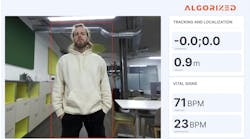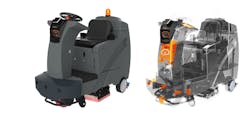Hi, this is Pavel in Japan. First, the good news: robots are finally coming. The bad news: they won't be the sexy humanoids imagined by anime creators.
That was the message from Eugene Izhikevich, founder and CEO of San Diego-based company Brain Corp., who was in Tokyo last week to speak at SoftBank's annual robot conference about one of his creations —an 881-lb. (400 kg) autonomous floor cleaner, called the ICE RS26 robotic floor scrubber.
The machine, which looks like a cross between a Zamboni and a motorized wheel chair, was originally designed to be operated by a human. Equipped with BrainOS, a platform comprising software and an array of sensors typically found in a self-driving car, it mops floors on its own even when customers are around.
"Anything you see that has wheels, we can turn into a robot," Izhikevich, a neuroscientist, said in an interview, speaking with a trace of a Russian accent. "Wouldn't it be nice to have 100 different robots three, five years from now?"
Though the industrial robot population has risen to 1.8 million since GM first put one on an assembly line in 1961, growth has been limited because most are variations on the original theme: a big claw on a metal limb. Attempts to use humanoid machines as companions and assistants have also fallen flat. Brain has found a way to get the machines out of their metal cages by finding niche business applications for recent advances in machine vision.
Brain's robots already clean floors at Wal-Mart, Costco, Lowe's and multiple airports in the U.S., and sales will begin in Japan next summer. Izhikevich said his order book is full until February.
Brain is focusing on indoor applications of autonomous driving technology because stores and warehouses offer more predictable environments. Unlike driverless cars, when stumped, the robots can always stop and query a more powerful AI in the cloud or even a human operator. They also don't require costly data collection to train the algorithms —janitors do the teaching by simply operating the machines.
- Length:66.57 in
- Width:33 in
- Height:54 in
- Weight: 619 lbs
- Weight With Batteries:881 lbs
- Solution Tank Capacity:29 gal
- Recovery Tank Capacity:29 gal
- Max. Autonomous Speed: 2.5 mph
- Max. Autonomous Productivity Rate: 34,982.5 ft2/hr
The sensor package to convert a manual cleaner into a robot includes a laser range finder; Brain charges $500 a month for the service. That's still a bargain considering Wal-Mart spends on average $1,500 a month to mop up a single store.
Floor cleaning is just the start; the company sees robots in the near future helping with security patrols and personal mobility. SoftBank's founder Masayoshi Son is on board with that vision and in July lets a $114 million investment round in Brain via his $93 billion Vision Fund. Qualcomm is also a backer.
Unlike the billionaire's other robotics bets, Brain doesn't actually make the machines. The company is developing a software platform that will let other robots move independently in closed environments. Much as Google did with its Android operating system, Izhikevich plans to give access to BrainOS to outside developers, a move that might happen as soon as next year.
"You want robots everywhere and you don't want to wait until you are 90," Izhikevich said. "If I'm the one who has to build those robots, it will take me 50 years. Instead, I can partner with 50 and 100 companies who are already building manual equipment and provide them the brains."
For more info, email [email protected].











